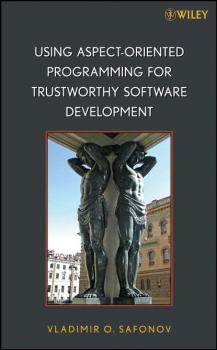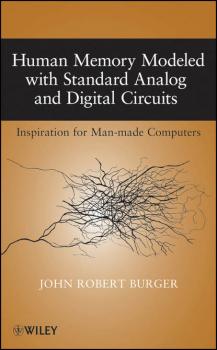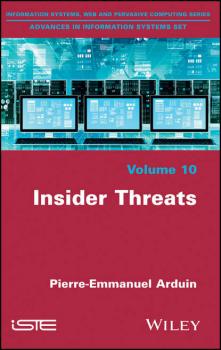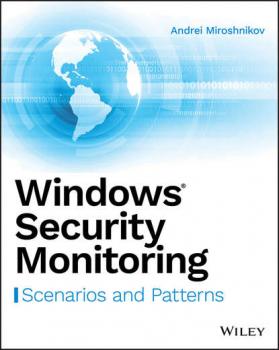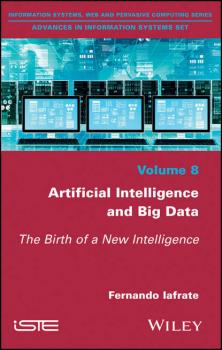ТОП просматриваемых книг сайта:
Группа авторов
Список книг автора Группа авторовАннотация
A practical guide to Cryptography and its use in the Internet and other communication networks. This overview takes the reader through basic issues and on to more advanced concepts, to cover all levels of interest. Coverage includes all key mathematical concepts, standardisation, authentication, elliptic curve cryptography, and algorithm modes and protocols (including SSL, TLS, IPSec, SMIME, & PGP protocols). * Details what the risks on the internet are and how cryptography can help * Includes a chapter on interception which is unique amongst competing books in this field * Explains Public Key Infrastructures (PKIs) – currently the most important issue when using cryptography in a large organisation * Includes up-to-date referencing of people, organisations, books and Web sites and the latest information about recent acts and standards affecting encryption practice * Tackles the practical issues such as the difference between SSL and IPSec, which companies are active on the market and where to get further information
Аннотация
Learn how to successfully implement trustworthy computing tasks using aspect-oriented programming This landmark publication fills a gap in the literature by not only describing the basic concepts of trustworthy computing (TWC) and aspect-oriented programming (AOP), but also exploring their critical interrelationships. The author clearly demonstrates how typical TWC tasks such as security checks, in-and-out conditions, and multi-threaded safety can be implemented using AOP. Following an introduction, the book covers: Trustworthy computing, software engineering, and computer science Aspect-oriented programming and Aspect.NET Principles and case studies that apply AOP to TWC Coverage includes Aspect.NET, the AOP framework developed by the author for the Microsoft.NET platform, currently used in seventeen countries. The author discusses the basics of Aspect.NET architecture, its advantages compared to other AOP tools, and its functionality. The book has extensive practical examples and case studies of trustworthy software design and code using the Aspect.NET framework. In addition, the book explores other software technologies and tools for using AOP for trustworthy software development, including Java and AspectJ. This book also includes a valuable chapter dedicated to ERATO, the author's teaching method employed in this book, which has enabled thousands of students to quickly grasp and apply complex concepts in computing and software engineering, while the final chapter presents an overall perspective on the current state of AOP and TWC with a view toward the future. Software engineers, architects, developers, programmers, and students should all turn to this book to learn this tested and proven method to create more secure, private, and reliable computing.
Аннотация
Gain a new perspective on how the brain works and inspires new avenues for design in computer science and engineering This unique book is the first of its kind to introduce human memory and basic cognition in terms of physical circuits, beginning with the possibilities of ferroelectric behavior of neural membranes, moving to the logical properties of neural pulses recognized as solitons, and finally exploring the architecture of cognition itself. It encourages invention via the methodical study of brain theory, including electrically reversible neurons, neural networks, associative memory systems within the brain, neural state machines within associative memory, and reversible computers in general. These models use standard analog and digital circuits that, in contrast to models that include non-physical components, may be applied directly toward the goal of constructing a machine with artificial intelligence based on patterns of the brain. Writing from the circuits and systems perspective, the author reaches across specialized disciplines including neuroscience, psychology, and physics to achieve uncommon coverage of: Neural membranes Neural pulses and neural memory Circuits and systems for memorizing and recalling Dendritic processing and human learning Artificial learning in artificial neural networks The asset of reversibility in man and machine Electrically reversible nanoprocessors Reversible arithmetic Hamiltonian circuit finders Quantum versus classical Each chapter introduces and develops new material and ends with exercises for readers to put their skills into practice. Appendices are provided for non-experts who want a quick overview of brain anatomy, brain psychology, and brain scanning. The nature of this book, with its summaries of major bodies of knowledge, makes it a most valuable reference for professionals, researchers, and students with career goals in artificial intelligence, intelligent systems, neural networks, computer architecture, and neuroscience. A solutions manual is available for instructors; to obtain a copy please email the editorial department at [email protected].
Аннотация
The Sarbanes-Oxley Act (SOX) was passed in 2002 in response to a series of high-profile corporate scandals and requires that public companies implement internal controls over financial reporting, operations, and assets; these controls depend heavily on installing or improving information technology and business methods Written by one of the most visible personalities on the tech-biz side of the SOX discussion, this highly readable, engaging book provides a clear road map for integrating SOX compliance into the fabric of everyday IT infrastructure and business practice Shows the reader how to leverage and use service-oriented architecture (SOA), a set of technologies that enables interoperation of heterogeneous computer systems, to achieve the level of internal controls over IT that SOX mandates
Аннотация
An information system may be regarded as an organized set of resources, both technological and human. Security should take this specificity into consideration in order to ensure an overall security of information systems. The security of information systems is usually tackled in a technological perspective. This book proposes to focus not only on information systems' security in a technological perspective, but also in a human, managerial and organizational perspective.
Аннотация
The aim of this book is to describe the methodology of conducting the THEDRE research «Traceable Human Experiment Design Research». It applies to Research in Human Centered Informatics (RICH). These are areas of computer research that integrate users to build scientific knowledge and supporting tools for this research. As an example, we can mention the relevant fields such as Information Systems (IS), Human Machine Interfaces (HMI) Engineering, and Human Information Systems (HIA). The construction of this language and method is based on experiments conducted since 2008 in the field of RICH.
Аннотация
For 200 years, industry mastered iron, fire, strength and energy. Today, electronics shapes our everyday objects, integrating chips: computers, phones, keys, games, household appliances, etc. Data, software and calculation frame the conduct of humankind, and everything is translated into data. The first volume in this series analyzes the stakes of the massive data which accumulate on the Internet, keeping track of our actions and gestures, the state of the world and our knowledge.
Аннотация
Go deep into Windows security tools to implement more robust protocols and processes Windows Security Monitoring goes beyond Windows admin and security certification guides to provide in-depth information for security professionals. Written by a Microsoft security program manager, DEFCON organizer and CISSP, this book digs deep into the underused tools that help you keep Windows systems secure. Expert guidance brings you up to speed on Windows auditing, logging, and event systems to help you exploit the full capabilities of these powerful native tools, while scenario-based instruction provides clear illustration of how these events unfold in the real world. From security monitoring and event detection to incident response procedures and best practices, this book provides detailed information on all of the security tools your Windows system has to offer. Windows includes many native tools that can help IT professionals and security experts spot and remedy suspicious activities on servers, networks, and end-user computers. If you're like many Windows pros, you're probably not taking full advantage of these features. This book takes you deep into Windows' underutilized built-in security tools to help you beef up your monitoring, detection, and response processes. Detect anomalous events and implement centralized alerting infrastructure Dig into the native Windows tools that enable robust security measures Understand the details of Powershell, Applocker, LogParser, and other tools Adopt effective incident response processes for various common scenarios Fully applicable to a range of Windows versions—back to Windows Vista and Windows Server 2008—this book is designed for real-world implementation. As the threats to your data grow more numerous by the day, it becomes ever more critical to use every security tool at your disposal. Windows Security Monitoring offers complete, expert guidance toward robust security with specialist-level use of powerful Windows tools.
Аннотация
With the idea of “deep learning” having now become the key to this new generation of solutions, major technological players in the business intelligence sector have taken an interest in the application of Big Data. In this book, the author explores the recent technological advances associated with digitized data flows, which have recently opened up new horizons for AI. The reader will gain insight into some of the areas of application of Big Data in AI, including robotics, home automation, health, security, image recognition and natural language processing.
Аннотация
Be prepared for the arrival of automated decision making Once thought of as science fiction, major corporations are already beginning to use cognitive systems to assist in providing wealth advice and also in medication treatment. The use of Cognitive Analytics/Artificial Intelligence (AI) Systems is set to accelerate, with the expectation that it’ll be considered ‘mainstream’ in the next 5 – 10 years. It’ll change the way we as individuals interact with data and systems—and the way we run our businesses. Cognitive Analysis and AI prepares business users for the era of cognitive analytics / artificial intelligence. Building on established texts and commentary, it specifically prepares you in terms of expectation, impact on personal roles, and responsibilities. It focuses on the specific impact on key industries (retail, financial services, utilities and media) and also on key professions (such as accounting, operational management, supply chain and risk management). Shows you how users interact with the system in natural language Explains how cognitive analysis/AI can source ‘big data’ Provides a roadmap for implementation Gets you up to speed now before you get left behind If you’re a decision maker or budget holder within the corporate context, this invaluable book helps you gain an advantage from the deployment of cognitive analytics tools.


